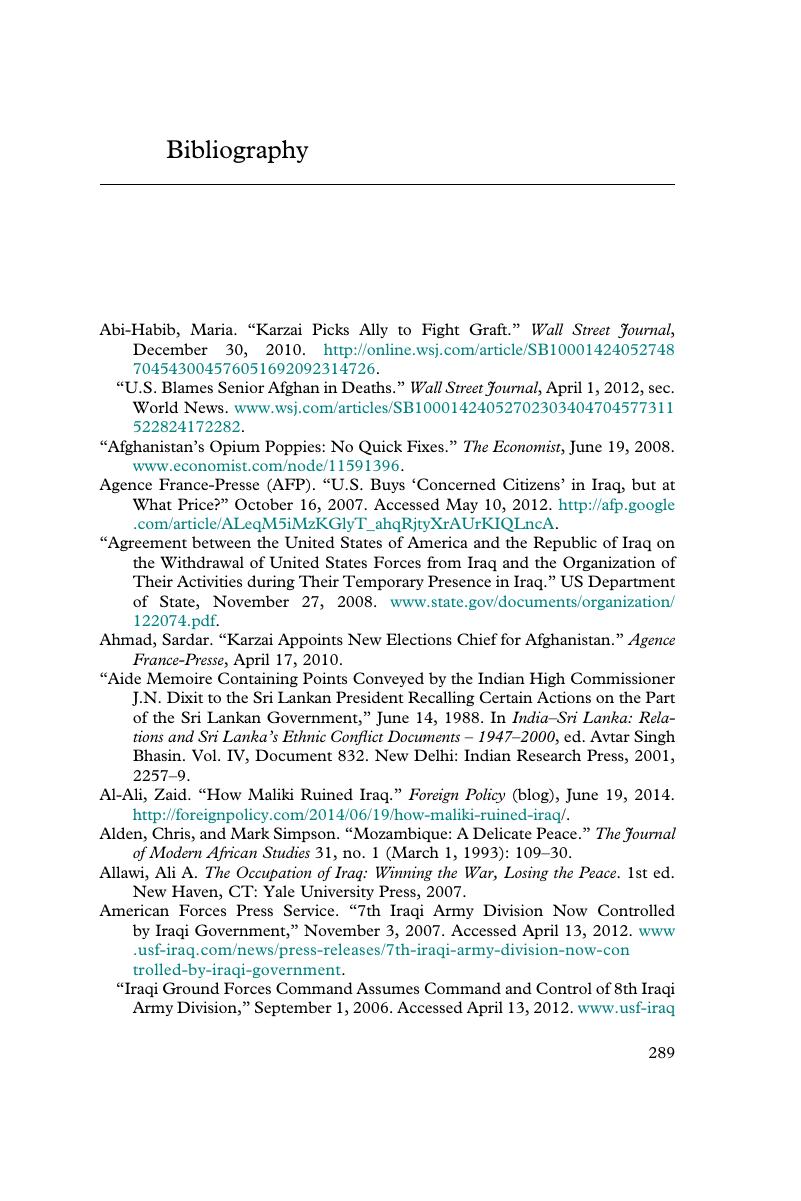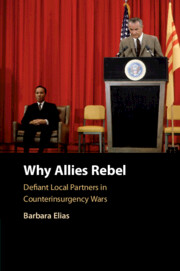Book contents
- Why Allies Rebel
- Why Allies Rebel
- Copyright page
- Contents
- Figures
- Tables
- Acknowledgments
- 1 Introduction
- 2 Why Local Allies Defy or Comply with Requests from Intervening Allies
- 3 Methodology
- 4 The USA in Iraq
- 5 The USA in Afghanistan
- 6 The USA in Vietnam
- 7 India in Sri Lanka
- 8 The USSR in Afghanistan
- 9 When Small States Intervene
- 10 Conclusion
- Book part
- Bibliography
- Index
- References
Bibliography
Published online by Cambridge University Press: 05 June 2020
- Why Allies Rebel
- Why Allies Rebel
- Copyright page
- Contents
- Figures
- Tables
- Acknowledgments
- 1 Introduction
- 2 Why Local Allies Defy or Comply with Requests from Intervening Allies
- 3 Methodology
- 4 The USA in Iraq
- 5 The USA in Afghanistan
- 6 The USA in Vietnam
- 7 India in Sri Lanka
- 8 The USSR in Afghanistan
- 9 When Small States Intervene
- 10 Conclusion
- Book part
- Bibliography
- Index
- References
Summary

- Type
- Chapter
- Information
- Why Allies RebelDefiant Local Partners in Counterinsurgency Wars, pp. 289 - 330Publisher: Cambridge University PressPrint publication year: 2020



